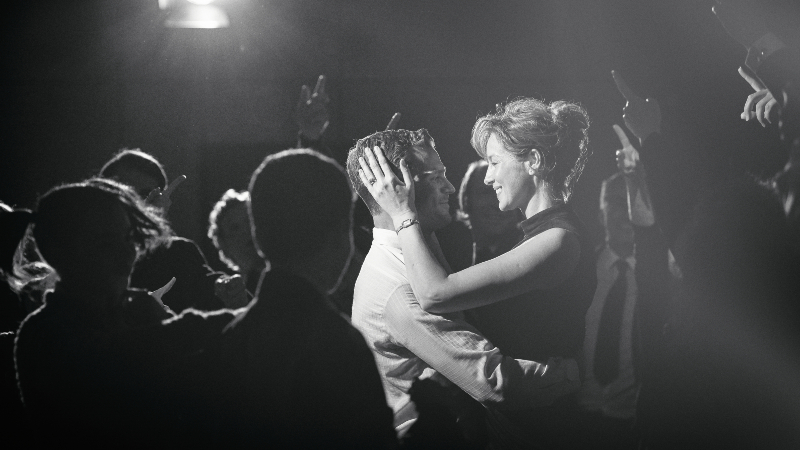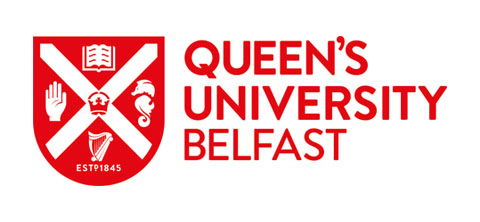Our City on Celluloid: Belfast
25 March 2022
In the final article of his Our City on Celluloid series, LUMI young programmer Fionntán Macdonald examines the film that inspired the series in the first place - Kenneth Branagh's Oscar-nominated Belfast.

In the saga of Belfast on screen there is no more prominent exemplar than the Academy Award-nominated coming-of-age drama Belfast (2021). Capturing imaginations worldwide, this homegrown picture has rekindled local passions for filmmaking and presented a charming colloquial story that is intrinsically intertwined with the life of its creator, Kenneth Branagh. Now nominated for seven Academy Awards and potentially facing historic wins, the time is right for a retrospective on Branagh’s love letter to the city of his birth.
From the opening frame Branagh’s love for this city is evident: the iconic voice of Van Morrison, himself a local who also soundtracks the film, sings over an opening montage of Belfast landmarks in vibrant colour. Morrison’s career was on the rise in this era, making him one of our few representatives on an international stage in a time of turmoil. This is the first subtle sign of the care taken to populate the film with details specific to the city’s very particular identity, immersing the unfamiliar audience in the setting.
Transitioning swiftly into the primary setting, we continue to see how this era has shaped Branagh’s film. Shifting to black-and-white photography, the last image in colour is a mural of the Belfast dockers, themselves a relic of a once prosperous industry now vanished. This film is captivated by days gone by and the passage to monochrome connotes this, while also giving a sense that we are viewing the ensuing events through a very particular perspective, that of Buddy (Jude Hill).
Buddy, a compelling character in his own right, is quite clearly a proxy for Branagh himself who has centred the narrative on his own recollections of the city in childhood rather than any foundation in historic fact. While historic allusions are always adjacent to Buddy’s story, we see these events through the eyes of a child who has neither the capacity or inclination to fully understand them. This approach veers slightly into hyperbole early, with bandana clad rioters akin to Western banditos showering Buddy’s Ma (Caitríona Balfe) with projectiles as she leaps to her son’s defence, bin lid shield hoisted to the sky. There’s an element of magic realism at play, yet Branagh’s impressionism is always pulled back just enough to retain the suspension of disbelief.
This is aided greatly by the core cast who all imbue their parts with an emotional naturalism that both disarms the sentimentality of the piece and adds greater resonance to the moments of poignancy, and there are a couple that will hit you squarely in the heart. Ciarán Hinds, having long cemented himself as one of the industry’s most under-appreciated character actors, particularly excels in this regard, with his stirring portrayal of Pop being genuinely affecting.
Hinds’ masterful portrayal of an aging patriarch is the beating heart of this film and for all the sentimentality on display, the end of his supporting arc is crafted and executed with genuine emotion and elevates the surrounding performances, giving Jamie Dornan’s Pa his most subtle but definitive moment.
While the colloquialisms included don’t always read as natural, Branagh’s script retains an observational wit and shrewd satire that drew some genuine laughs and does manage to capture something of the city’s character. And while his greatest strength as a director is clearly found in collaboration with his actors, the strengths of his cinematographer Haris Zambarloukos are on full display also.
Belfast is a greyscale dream; the domestic setting is tremendously enhanced by some bold lighting choices and expert composition which greatly enhances the narrative subtext. Buddy was raised in a black-and-white world with heroes and villains, good and bad clearly defined, and the colour palette reflects this. Yet the film takes place in the age of technicolour and the sporadic use of isolated colour denotes the change of the times, and Buddy’s changing perception. As he grows he learns that the world is not drawn in shades of grey, and through his experiences he sees a spectrum of morality he had never been exposed to. This is hardly a new technique, but it is employed so deftly that it feels fresh and never distracts from the intensely personal story rendered with this bold palette.
Belfast is not a perfect film, but it is still an exceptional one. It is the culmination of a city's silver screen story and a signpost for what is yet to come, and is definitely not the last time we will see our city on celluloid.
- written by LUMI programmer Fionntán Macdonald




